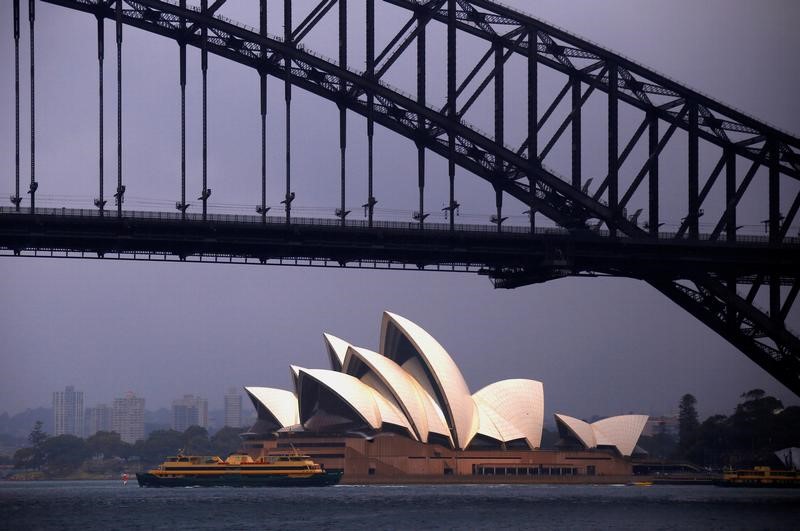By Ambar Warrick
Investing.com-- Australia saw an unexpected current account deficit in the September quarter, data showed on Tuesday, as slowing growth in major trading partner China and a fall in commodity prices from annual peaks dented the value of exports.
Australia’s current account balance shrank to a negative 2.3 billion Australian dollars (1 A$= $0.6713) in the three months to September 30 from A$18.3 billion in the prior quarter. The reading also severely missed estimates for a surplus of A$10.5 billion.
Net exports from Australia now dented economic growth by 0.2% during the quarter, data from the Australian Bureau of Statistics (ABS) showed.
The current account deficit was primarily driven by a sharp drop in the value of goods exported. Net goods exported in the September quarter fell to A$38.87 billion from A$47.62 billion in the prior quarter.
A bulk of this slowdown was driven by weakening commodity demand in China, which is Australia’s largest trading partner. Slowing economic growth in the mainland, due to a resurgence in COVID-19 infections, severely weighed on the country’s appetite for exports.
The value of commodity exports also dropped during the quarter, as global commodity prices retreated further from peaks hit earlier in 2022.
The reading now bodes poorly for upcoming third-quarter GDP data from Australia, which is set to be released on Wednesday. Analysts expect the economy to have expanded at an annual pace of 6.2%, reflecting a lower basis of comparison due to the COVID-19 pandemic last year.
But GDP is also expected to grow 0.7% from the prior quarter, slower than the previous quarter’s reading of 0.9%. A post-COVID boom in Australia seen earlier this year may be running out of steam.
The dismal current account reading also comes ahead of an interest rate decision by the Reserve Bank of Australia later on Tuesday. The central bank is widely expected to hike interest rates by 25 basis points, as it struggles to strike a balance between fighting inflation and preventing an economic slowdown.
Weakening economic trends could see the bank announce a pause to its hiking cycle.
The Australian economy is now facing renewed headwinds from high inflation, which surged to a 30-year high in the third quarter. This, coupled with a sharp rise in interest rates this year to combat inflation, is expected to weigh heavily on economic growth.
Retail spending is also steadily slowing in the country, amid stagnant wage growth and worsening consumer sentiment.
The Australian dollar rose 0.2% after the reading. But the currency was nursing steep losses from the prior session.
